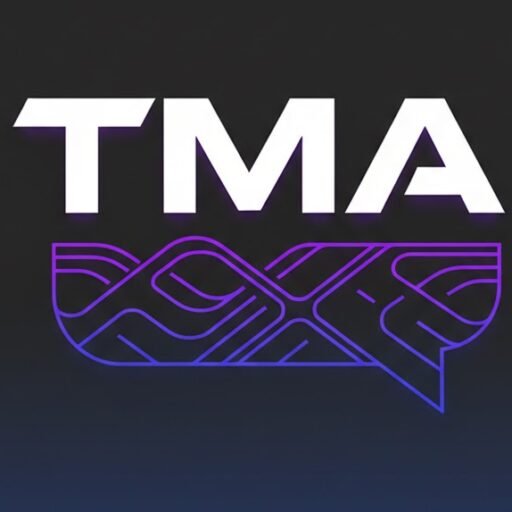Market Pulse
In a significant evolution of blockchain’s real-world utility, Ripple is making formidable strides in leveraging its technology and the newly established RLUSD stablecoin to revolutionize global humanitarian aid. As of October 2025, the traditional mechanisms for delivering aid continue to grapple with inefficiencies, lack of transparency, and slow transaction speeds. Ripple’s recent initiatives signal a potent shift, proposing a blockchain-powered paradigm that promises to enhance the efficacy and accountability of relief efforts worldwide.
Bridging the Aid Gap with Blockchain Innovation
The humanitarian sector, while vital, has historically been plagued by systemic challenges. Delays in fund disbursement, high operational costs, and an opaque flow of donations often hinder immediate and effective response in crisis-stricken regions. Blockchain technology, with its inherent attributes of transparency, immutability, and speed, presents a compelling solution. Ripple’s engagement in this space is not merely about payments; it’s about establishing a more resilient, verifiable, and equitable infrastructure for humanitarian assistance.
- Transparency: Every transaction on the ledger is recorded and verifiable, allowing donors to track funds from origin to beneficiary.
- Speed & Efficiency: Cross-border payments can be settled in seconds, drastically reducing the time it takes for aid to reach those in need.
- Reduced Costs: Eliminating intermediaries and optimizing processes can significantly lower the administrative overhead associated with aid distribution.
- Financial Inclusion: Facilitating direct digital payments to recipients, especially in unbanked or underbanked areas, promotes greater financial autonomy.
RLUSD: A Stablecoin Redefining Aid Disbursements
At the heart of Ripple’s humanitarian push is the RLUSD stablecoin, designed to offer the stability of fiat currency with the benefits of blockchain. Unlike volatile cryptocurrencies, RLUSD maintains a stable value, making it an ideal medium for transferring and disbursing funds for essential aid supplies, infrastructure rebuilding, and direct cash assistance. Its integration into the XRP Ledger (XRPL) provides a robust and scalable foundation for high-volume transactions, ensuring that humanitarian organizations can operate with unprecedented reliability and reach.
The deployment of RLUSD signifies a strategic move to address the practical financial needs of aid operations. By providing a stable, digital asset, Ripple aims to mitigate foreign exchange risks, accelerate procurement processes, and ensure that the value of donations is preserved throughout the aid chain. This allows organizations to focus more on logistical implementation and less on financial reconciliation.
Read Also: The Rise of Modular Blockchains: Architecting Web3’s Scalable Future by 2025
Strategic Alliances for Broader Impact
Ripple’s vision for humanitarian aid extends beyond its proprietary technology, encompassing strategic partnerships with key players in the global relief community. Collaborations with international NGOs, local aid agencies, and governmental bodies are crucial for successful implementation. While specific new partnerships dedicated solely to humanitarian efforts haven’t been widely publicized as of late October 2025, Ripple’s existing network of financial institutions and payment providers, built on the XRP Ledger, offers a ready-made conduit for these funds. This infrastructure can be swiftly adapted to support large-scale humanitarian operations, leveraging established pathways for secure and compliant transfers.
The interoperability and scalability of the XRP Ledger ensure that these aid efforts can expand rapidly to meet urgent demands, from disaster relief to long-term development projects. This collaborative approach multiplies the potential reach and effectiveness of blockchain-powered aid, moving beyond isolated pilot projects to systemic change.
Ensuring Traceability and Accountability from Donation to Delivery
One of the most profound benefits of blockchain in humanitarian aid is the enhanced ability to track every dollar, from the initial donation to the final recipient. This level of granular traceability addresses a critical concern for donors: knowing that their contributions are utilized as intended. The immutable ledger prevents tampering and provides an auditable trail, significantly reducing the risk of corruption or diversion of funds. Smart contracts, built on the XRP Ledger, could further automate fund releases based on predefined conditions, adding another layer of programmatic accountability.
This transparency builds trust among donors, potentially encouraging greater giving, and empowers aid organizations with better data for impact assessment. Ultimately, it strengthens the entire ecosystem of humanitarian response by fostering integrity and efficiency.
Conclusion
Ripple’s strategic pivot to leverage RLUSD and the XRP Ledger for global humanitarian aid marks a pivotal moment for the crypto industry and the aid sector alike. By offering unparalleled transparency, speed, and cost-efficiency, this initiative has the potential to fundamentally reshape how assistance is delivered to vulnerable populations. As the world faces increasing humanitarian crises, the innovative application of blockchain technology by entities like Ripple offers a beacon of hope, promising a future where aid is not only faster and cheaper but also more accountable and impactful.
Pros (Bullish Points)
- Significantly enhances transparency and traceability of aid funds, rebuilding donor trust.
- Accelerates fund delivery to crisis zones, improving response times and efficiency.
- Reduces operational costs and minimizes foreign exchange risks for aid organizations.
- Showcases a powerful, positive real-world utility for blockchain and stablecoins beyond speculation.
Cons (Bearish Points)
- Adoption challenges may arise due to regulatory hurdles in various jurisdictions.
- Reliance on digital infrastructure might exclude beneficiaries in areas with limited connectivity.
- Initial integration costs and training for humanitarian organizations could be substantial.
Frequently Asked Questions
How does RLUSD stablecoin assist humanitarian aid efforts?
RLUSD provides a stable digital currency for rapid, transparent, and low-cost cross-border fund transfers, reducing volatility risks and improving efficiency in aid distribution.
What are the main advantages of using blockchain for humanitarian aid?
Blockchain offers enhanced transparency, immutable transaction records, faster settlement times, reduced costs, and improved traceability, ensuring funds reach intended recipients more effectively.
Is this initiative specific to disaster relief, or does it cover broader humanitarian efforts?
While particularly effective for disaster relief due to speed requirements, the initiative aims to cover broader humanitarian efforts, including long-term development projects and general aid distribution.






